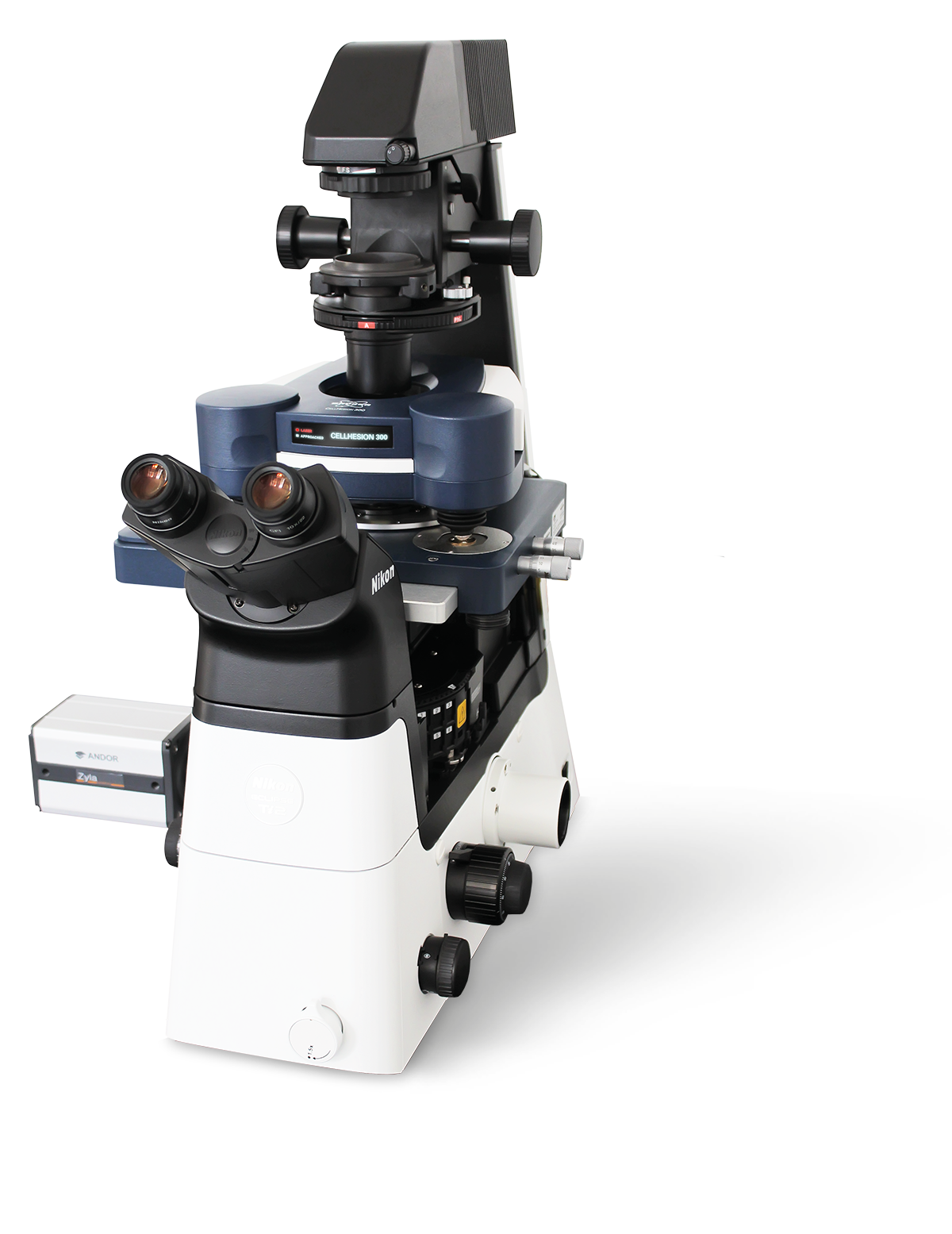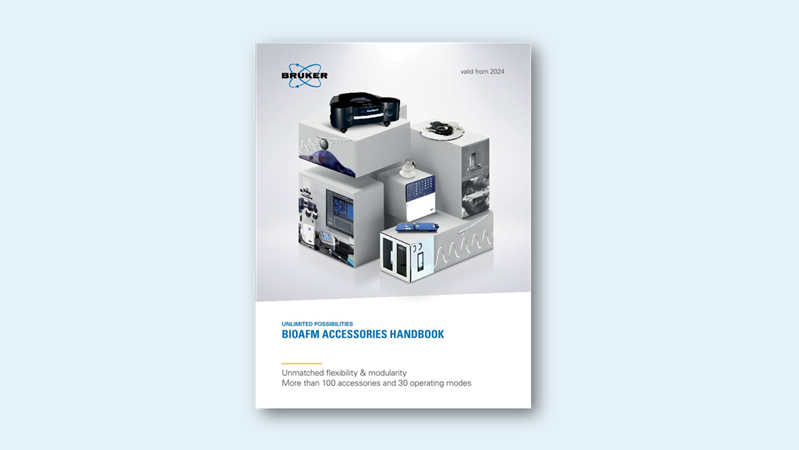JPK CellHesion 300 生物型原子力显微镜
CellHesion® 300
自动化的cellhesion 300是以单分子灵敏度测量细胞-细胞,细胞-组织,细胞-基底相互作用的理想工具。 其出现使得对于活的生物系统的结构、形貌以及纳米力学性能的测量变得方便快捷,展示这些性能在不同病理疾病中扮演的角色。这一开创性的系统创造了无数的生物物理、生物化学,移植,伤口愈合,发育生物学,干细胞、感染生物学,免疫学中的应用可能。
让生物力学变得通俗易懂
Cellhesion 300提供可重复的、高品质的、定量的数据。高度自动化增加了测试通量,提高了生产效率,提供了生物医学以及临床研究中必需的统计学意义。而且重要的参数,如最大粘附力,单独的折叠,tether 特征等,可通过开创性的软件自动获取。
CellHesion 300能提供:
自动化测试实现最大化的通量,更高的生产效率
近生理条件下无标记多相关参量纳米力学量测
在大样品上简单快捷选择不同感兴趣的区域,组织活检
具有视觉支持的系统化工作流程
自动化多参数纳米力学成图
先进的软件,独创的用户向导,探测系统自动对焦是实现自动化操作以及快扫结果的关键。
新一代CellHesion 300用户界面赋予用户简单快捷地掌控这一系统以及操作参数。
软件为用户自定义实验提供了便于使用的编辑工具。功能强大的数据批量处理功能使得用户可以一键定量分析大的数据包。
探索更大可能
通过可选的Z-扫描器和NestedScanner功能,在更大的频率范围内绘制大起伏样品的粘弹性能图。
通过丰富的附件控制环境条件,如温度和二氧化碳水平,在接近生理条件下研究活体细胞
大样品自动探索
新的SmartMapping功能能够选择灵活的、用户定义的二维形状的力谱图。通过新的大比例的Z-马达不断评估和自动调整最佳的力采集范围。利用光学tiling,可以提前选择多个感兴趣的区域并自动测试,可以轻松有效地研究大样品的不同区域。改进的电动平台精度提供了首屈一指的精度和速度。
与光学显微镜无缝整合
CellHesion 300可以与最新的先进的和超分辨的光学显微镜无缝集成,为活体生物样本的全面表征提供实时、相关联的数据集。多样化的实验设置和系统参数的自动调整为长期的、自我调节的系列实验提供了新的可能性。CellHesion 300是研究粗糙表面、密堆积的细胞层和大起伏组织样品的理想解决方案。
利用CellHesion发表的学术论文选集
- Abuhattum et al., Adipose cells and tissues soften with lipid accumulation while in diabetes adipose tissue stiffens. Sci Rep 12, 10325 (2022).
- Michael et al., Measuring the elastic modulus of soft culture surfaces and three-dimensional hydrogels using atomic force microscopy. Nat Protoc 16, 2418–2449 (2021).
- Liebsch et al., Quantification of heparin’s antimetastatic effect by single-cell force spectroscopy. J Mol Recognit. 34, e2854 (2021).
- Möllmert et al., Zebrafish Spinal Cord Repair Is Accompanied by Transient Tissue Stiffening. Biophys J. 118(2), 448-463 (2020).
- Shen et al., Reduction of Liver Metastasis Stiffness Improves Response to Bevacizumab in Metastatic Colorectal Cancer. Cancer Cell 37(6), 800-817 (2020).
- Rheinlaender et al., Cortical cell stiffness is independent of substrate mechanics, Nat. Mater. 19, 1019–1025 (2020).
- Aaron at al., Quantification of heparin's antimetastatic effect by single-cell force spectroscopy, J Mol Recognit., 1–11 (2020).
- Krieg et al., Atomic force microscopy- based Mechanobiology, Nature Reviews Physics 1, 41–57 (2019)
- Stylianou et al., Review Article: Atomic Force Microscopy on Biological Materials Related to Pathological Conditions, Andreas, Scanning, 8452851 (2019)
- Thompson et al., Rapid changes in tissue mechanics regulate cell behaviour in the developing embryonic brain. eLife 8:e39356 (2019)
- Miroshnikova et al., Adhesion forces and cortical tension couple cell proliferation and differentiation to drive epidermal stratification, Nat Cell Biol 20, 69–80 (2018)
- Elias et al., Tissue stiffening coordinates morphogenesis by triggering collective cell migration in vivo, Nature 554, 523-527 (2018)
- Bharadwaj et al., aV-class integrins exert dual roles on a5b1 integrins to strengthen adhesion to fibronectin, Nature Communications 8, 14348, 1-10 (2017)
- Friedrichs et al., A practical guide to quantify cell adhesion using single-cell force spectroscopy. Methods (2013)
CellHesion数据展
布鲁克公司的BioAFM使生命科学和生物物理学研究人员能够在细胞力学和粘附、力学生物学、细胞-细胞和细胞-表面相互作用、细胞动力学和细胞形态学等领域进一步开展研究。我们收集了一些展示其中一些应用的图片。
市面上丰富的配件选择
光学系统/附件、电化学解决方案、电子样品表征、环境控制选项、软件模块、温度控制、声学和振动隔离解决方案等等。布鲁克公司为您提供合适的配件,以控制您的样品条件并开展成功的实验。
Accessories to extend your BioAFM capabilities
Bruker offers an extensive range of BioAFM system add-ons, accessories, and modes to deliver maximum experimental and sample control, superior versatility, and enhanced useability. These options extend the range of applications and experiments supported by Bruker BioAFMs far beyond what is possible with any other BioAFM system on the market today.
Available options include optical systems/accessories, electrochemistry solutions, electrical sample characterization, environmental control options, software modules, temperature control, acoustic and vibration isolation solutions, and more.
Browse our online accessories database or download our accessories handbook to learn more.
观看最新的生物型AFM研讨会
我们的网络研讨会涵盖最好的实践,介绍新产品,为棘手的问题提供快速解决方案,并为新的应用、模式或技术提供思路。
用户反馈
“利用CellHesion 300对大起伏样品进行自动化力学性能筛选是临床方面组织表征的巨大进步。”
---来自Ansgar Petersen教授
再生医疗中心,BIH
夏洛特医学院,柏林,德国


